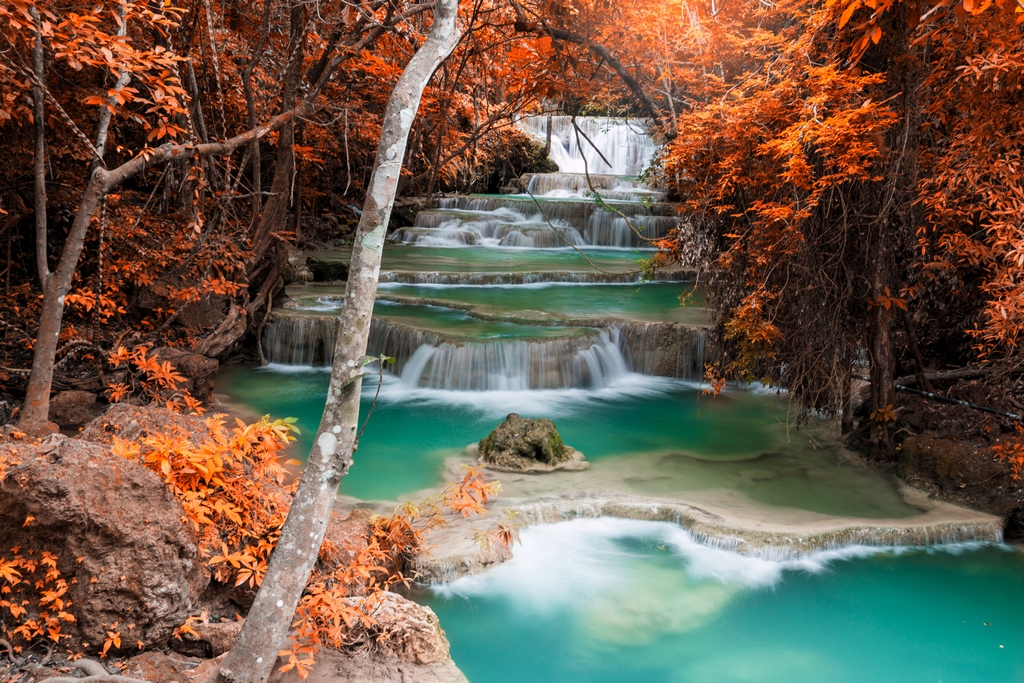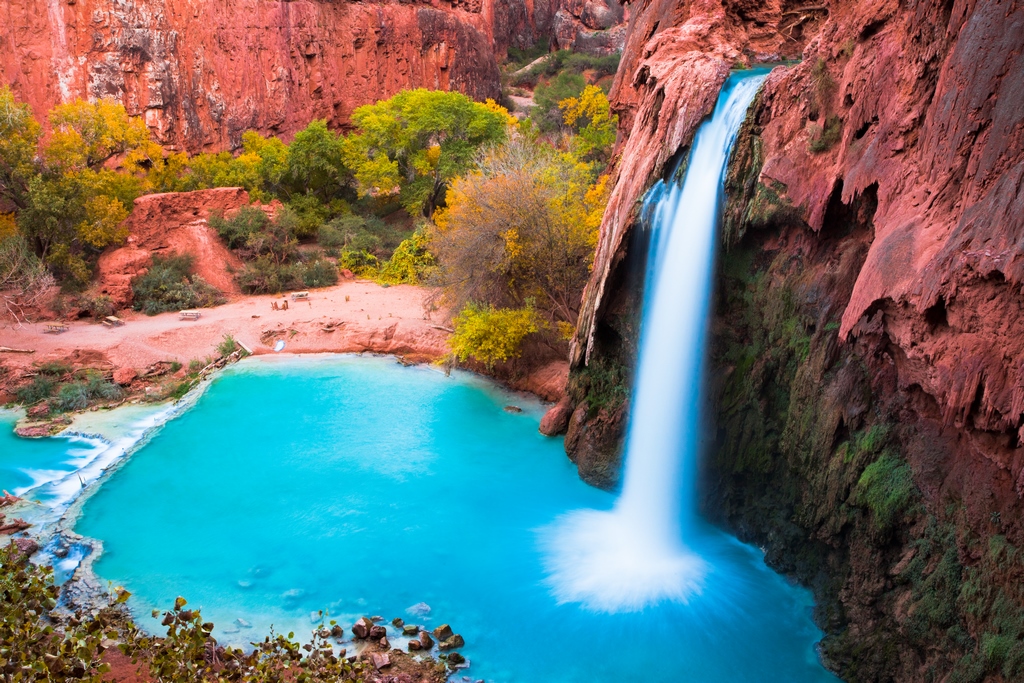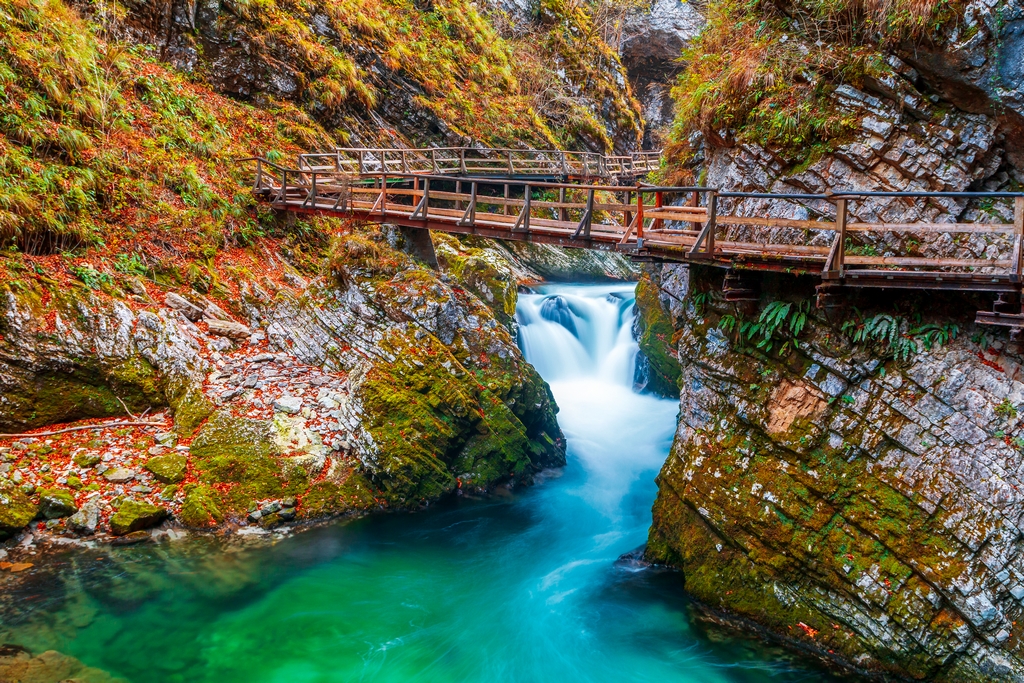Havasu Blue


Often cited as having some of the most beautiful waters and surrounding landscape in the Southwestern United States, Arizona’s Havasu Canyon is one of the Grand Canyon’s most remote destinations. For those who manage the journey, the reward is a visual pageant sculpted by geology and dynamic water chemistry.
By Eric Herman
It’s a natural gem that few people ever see. Havasu Canyon with its shimmering turquoise pools and plethora of falls and cascades, is the heart of the Havasupai Indian Reservation located below the south rim of the Grand Canyon.
The tribal name means “People of the Blue-Green Water.”
For centuries, long before the arrival of European explorers, the Havasupai have revered their connection to nature that’s on constant display within their native landscape. They are one of six native-American nations indigenous to the Grand Canyon, a group that also includes the Hualapai, Navajo, Hopi, Paiute and Zuni. The Havasupai irrigated spring and summer crops with the mineral-rich water of Havasu Creek, migrating upslope at other times of year to escape the intense heat of summer. By 1919, the Havasupai were restricted to a reservation.
The Havasupai village and tribal capitol of Supai is the only settlement remaining inside the Grand Canyon itself. It can be reach only by helicopter or a challenging 13-kilometer hike, or on horseback. Once there, visitors are greeted by a remarkable landscape of deep canyons and towering formations made of Kaibab and Redwall limestone.
Water tumbles and falls through the landscape in an unfolding dance of water, stone, light, chemistry and time. Soaring cliffs with dramatic thundering waterfalls give way to series of pools and popular swimming holes formed by small travertine dams.
Havasu Canyon is formed by Havasu Creek, the largest tributary to the Colorado River on the Grand Canyon’s south rim. There are five major waterfalls in Havasu Canyon including the towering 60-meter Mooney Falls and the most visually arresting and iconic, Havasu Falls, which falls 30 meters into a large jewel-like pool.
For the Havasupai people, and the intrepid visitors who venture to Havasu Canyon, the color of the water in the pools, fed by the falls, is the most memorable. The water’s distinct color is due to the area’s geology and resulting water chemistry.
According to geologists studying the region (citations below) the creek is fed by rainwater and snow melt from the canyon’s rim, percolating through the porous limestone, which over millions of years formed the area’s spectacular cliffs and formations. Because Havasu Canyon is the longest and deepest for much of the GC’s south rim, a large portion of the runoff flows toward the canyon as groundwater.
Groundwater emerges from the rocks in the form of springs rich in dissolved calcite and magnesium. As the water tumbles over the falls and rocky stream course, it loses carbon dioxide which, in effect, reverses the process that dissolved the limestone in the first place, causing the calcite to precipitate from the water in the form of travertine and tufa. Tufa is formed in cool, calm water, and can be quite soft, like a white mud.
As a result, tufa can be reshaped or even washed away by large flows, creating an ever-changing stream channel. Travertine is very similar, but it is formed in areas of geothermal activity, where the water is warmer, and it is harder than tufa.
The resulting dams and formations are in perpetual change due their malleable nature and are often altered significantly during flash floods. In August 2008, an El Nino year, torrential flash floods, which prompted residents to evacuate by airlift, reshaped the falls and pools most notably obliterating a dual-spout formation on Havasu Falls and altering large portions of Havasu Creek’s stream course.
As for the water’s stunning appearance: the dissolved magnesium and calcium and the suspended calcium carbonate reflect sunlight to create the turquoise color. The riverbed is made up of reflective limestone, which makes the color appear even brighter.
Geological explanation from earthmagazine.org, “Travels in Geology: Havasu Canyon: Land of blue-green water” by Terri Cook and Lon Abbott, May, 2018. Water color explanation from, The Center for Watershed Sciences, Why So Blue Havasu?, Feb. 2016.
Top photo by Ethan Ruhlan | Shutterstock. Middle image by Anna Morgan | Shutterstock, bottom image by Edwin Verin | Shutterstock.











